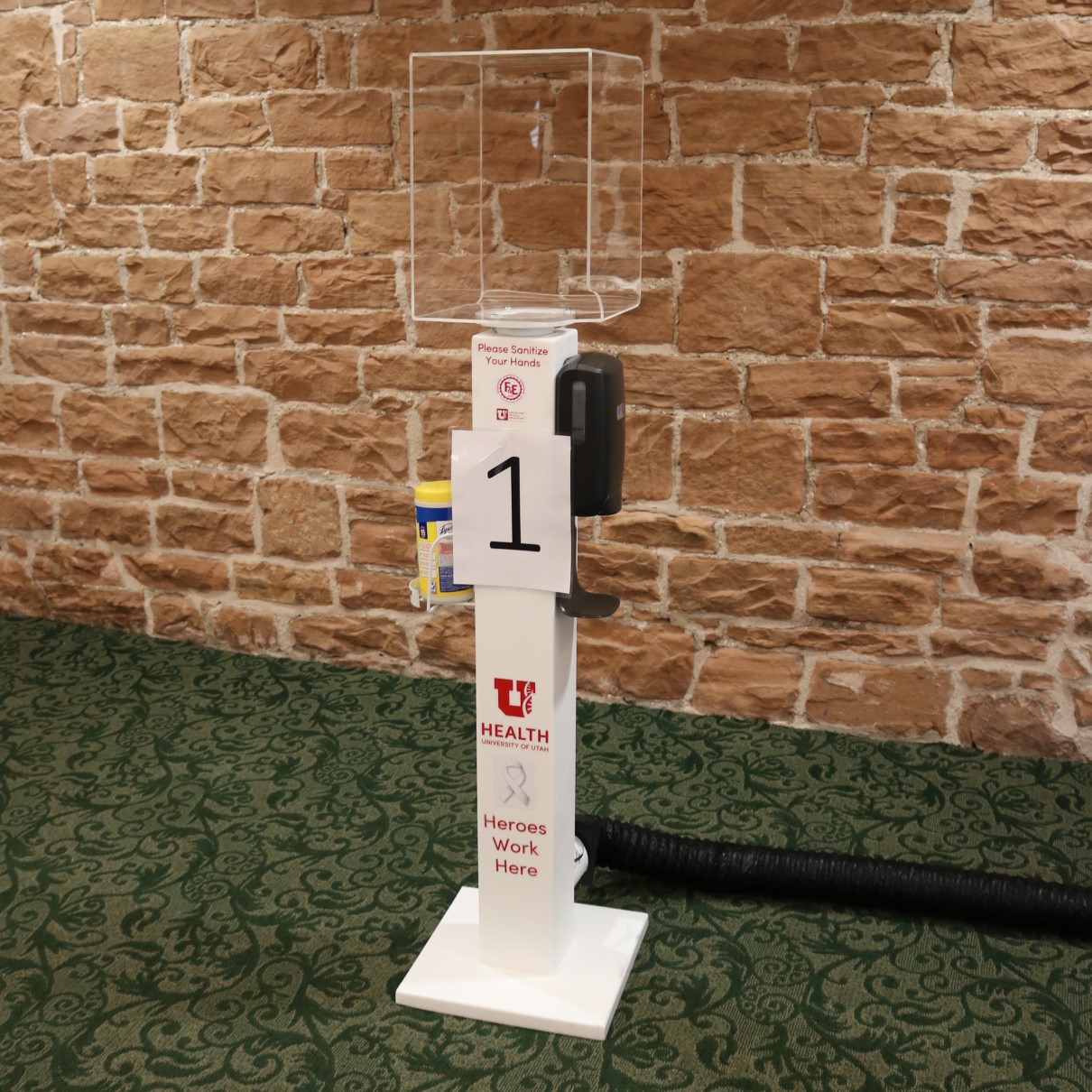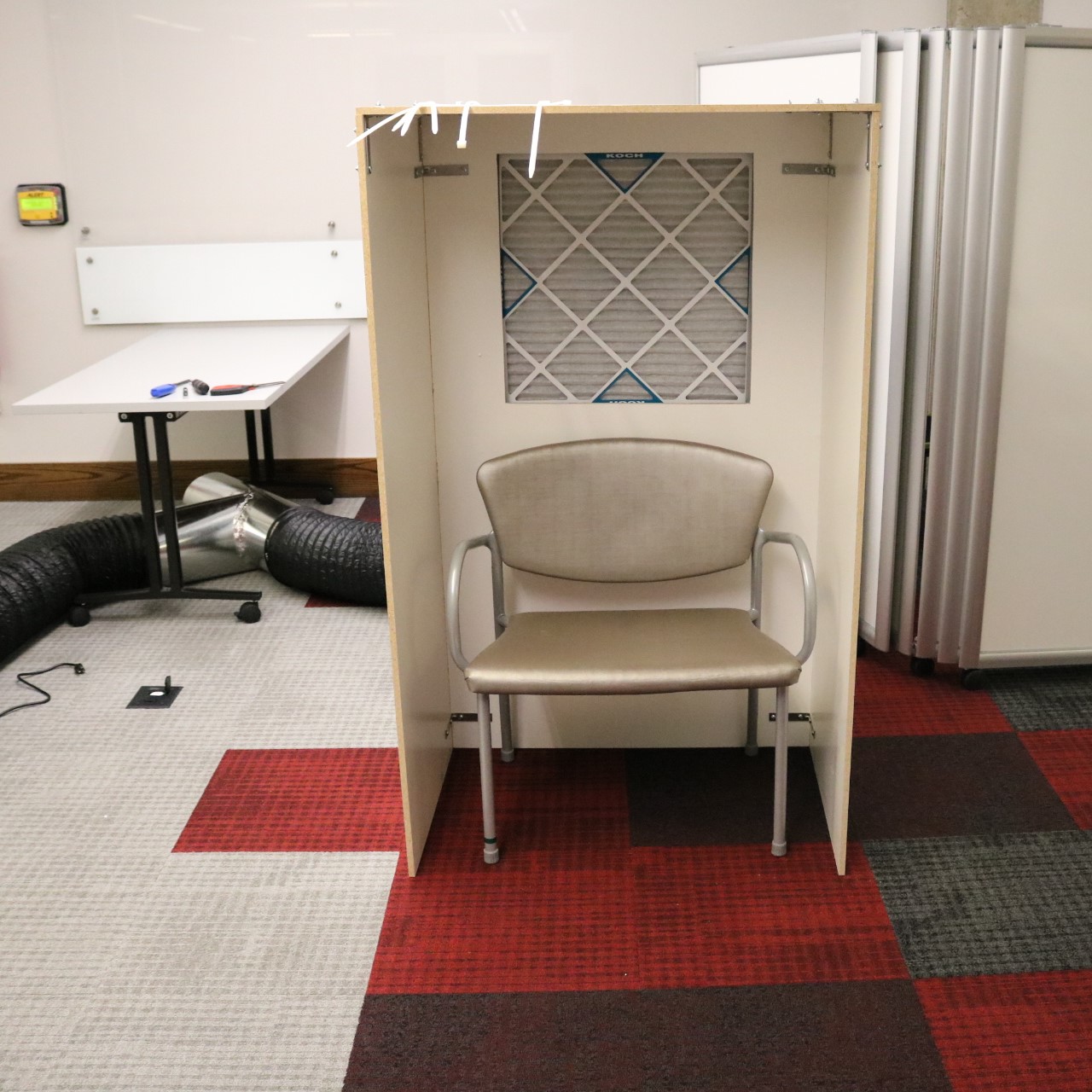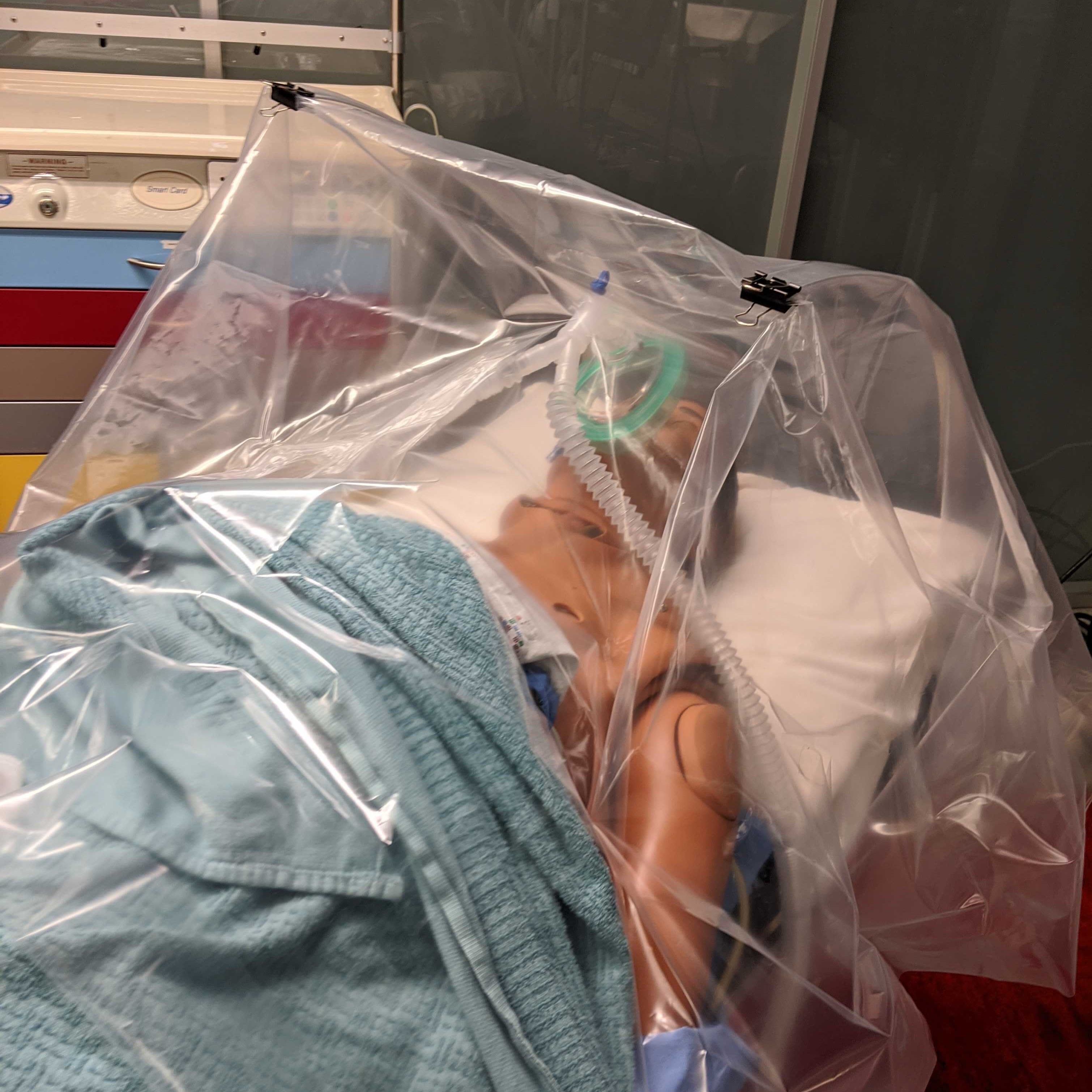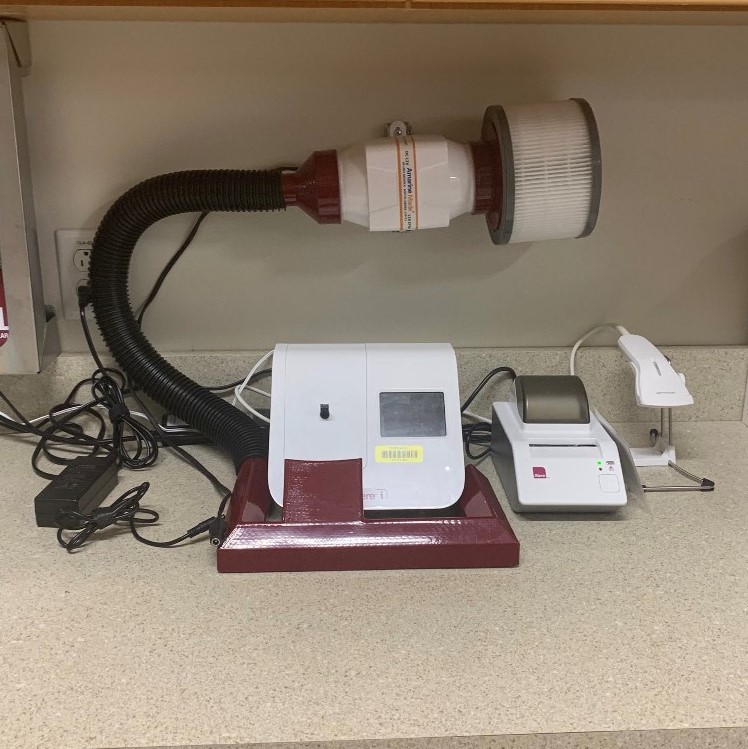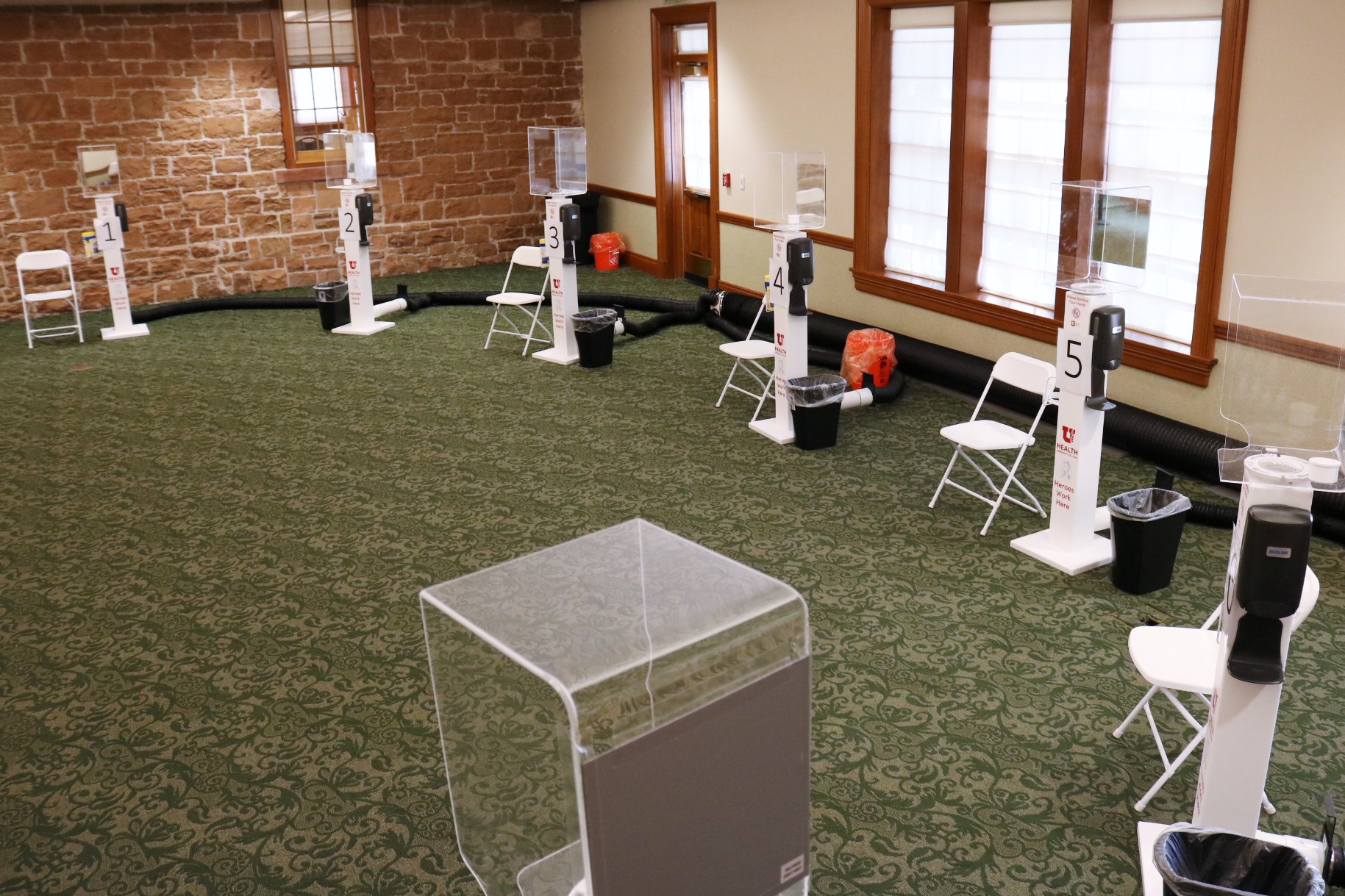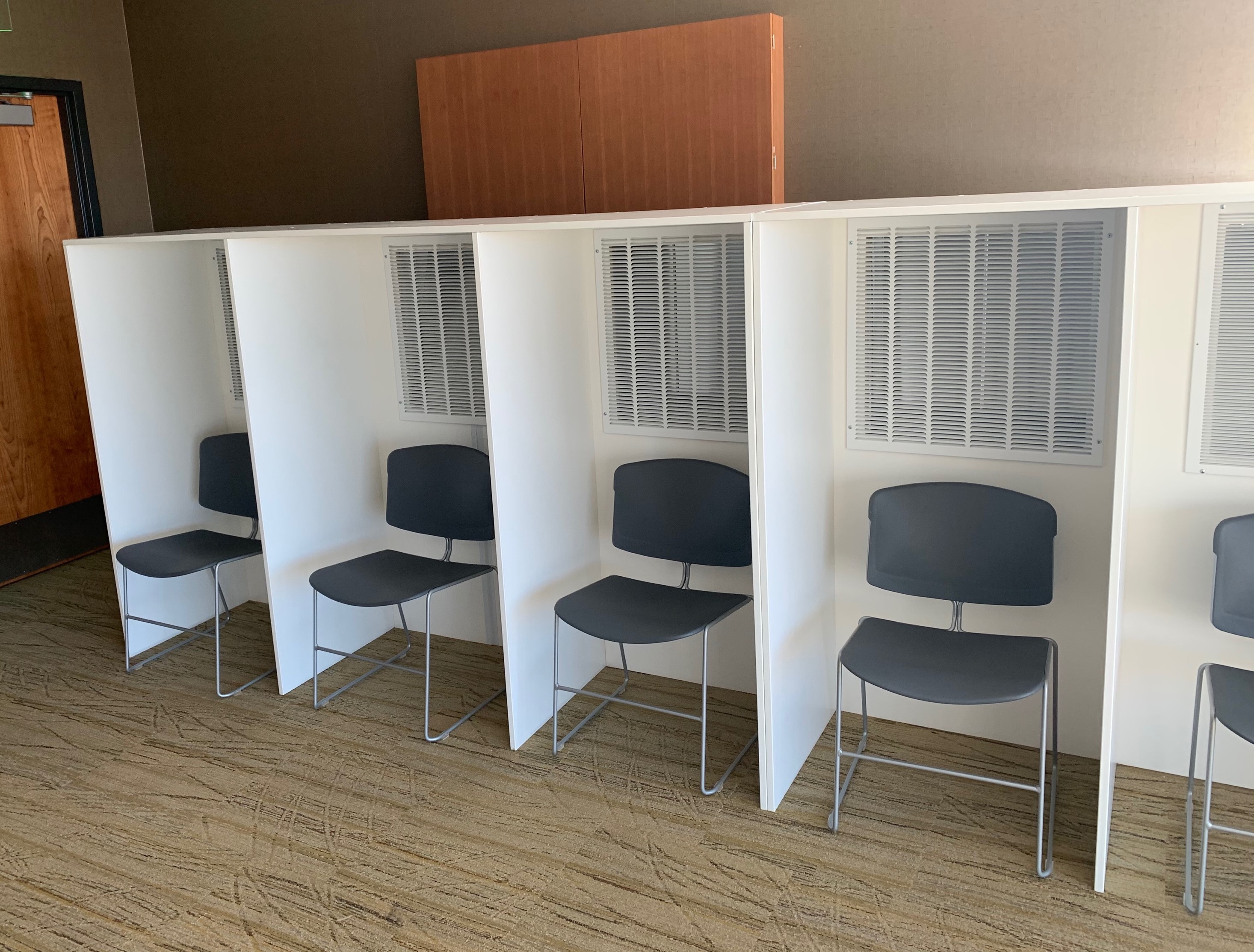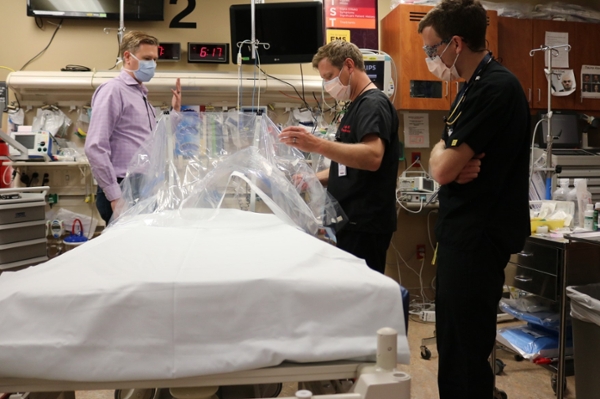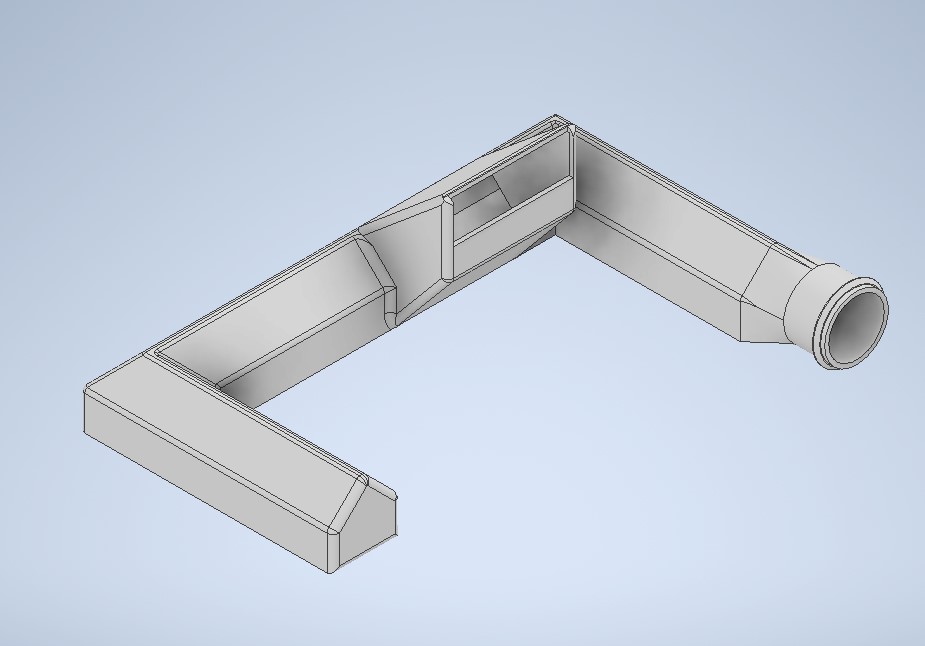This page provides an overview of the Engineering Controls projects developed by CMI in response to these challenges, representing the continually evolving understanding of how to best protect health care professionals from novel coronavirus and better control its transmission.
Engineering Controls
SELF-SWAB TESTING KIOSK WITH VACUUM FILTRATION
|
|
|
CHALLENGE |
|
| One of the most widely used tests for COVID-19 is a self-administered swab of the nose and the back of the throat. During this test it was found many people would cough, sneeze or gag. This raised major concerns with both droplet and aerosol exposure to COVID positive people. The university required testing of almost 4,000 students returning to the dorms in August. | |
RESPONSE |
|
| In collaboration with the Facilities team, CMI designed a ventilated kiosk which allows for this type of testing to be brought indoors while isolating the droplets and aerosols during these tests. A modular filtered exhaust system at each kiosk allows for unique configuration of set-up at any facility, and includes ADA accessible set-up. Qualitative testing of effectiveness showed the kiosks provided an approximately 1,000-fold decrease in particles escaping the booth. | |
PROJECT STATUS |
|
|
These kiosks are currently in-use throughout UU clinics and other main campus facilities for student testing, and were also used for testing attendees to the Vice-Presidential debate. |
|
WAITING-ROOM ISOLATION BOOTH WITH VACUUM FILTRATION
|
|
|
CHALLENGE |
|
| Until test results return, it is impossible to determine which patients are experiencing a respiratory infection due to COVID-19, or other more common infections such as influenza. Separating these patients from those without symptoms of respiratory infections may be difficult in existing clinics due to layout and HVAC constraints, while crucial to capture as many aerosols and droplets as possible while indoors to minimize risk of COVID-19 transmission. | |
RESPONSE |
|
| In collaboration with the Facilities team, CMI designed an isolation booth with vacuum filtration to contains aerosols a patient may generate while indoors. A modular filtered exhaust system at each booth allows for unique configuration of set-up at any facility, including ADA accessible set-up. Qualitative testing of effectiveness showed the kiosks provided an approximately 1,000-fold decrease in particles escaping the booth. | |
PROJECT STATUS |
|
|
These booths are currently being constructed and installed at multiple UU clinics. At the time this report was generated, an approximate total of 40 booths are planned for installation. |
|
AEROSOL CONTAINMENT TENT
|
|
|
CHALLENGE |
|
| Many patients undergo aerosolizing procedures during a hospital stay, especially when being treated for COVID-19. This includes nebulization treatments (i.e. Albuterol), ventilator treatment (including noninvasive), and other aerosolizing procedures, including intubation. These procedures can put health care providers at risk of contracting COVID-19. | |
RESPONSE |
|
| To contain aerosols generated during these procedures, a transparent shielding device or tent can be affixed to a patient’s bed. While placing a patient under a tent during an aerosolizing procedure increases the particle count immensely (concentrating particles from a baseline of 5000 ppm to over potentially 1M ppm), a rapid evacuation of air inside the tent with a HEPA rated filtration system returns the air within to the baseline level of aerosols within 60 seconds and minimizes prolonged exposure to the health care provider. | |
PROJECT STATUS |
|
|
More than 30 reusable frames and hundreds of plastic coverings are currently in use at UU & IHS facilities, including the ED and several other departments. |
|
RAPID COVID-19 TEST AEROSOL CONTAINMENT
|
|
|
CHALLENGE |
|
| There is currently an option for rapid COVID-19 testing results in use at the University of Utah. This testing method requires the use of an analysis device from Alere. The manufacturer reported the process of analyzing the samples as an aerosolizing procedure, risking potential exposure to COVID-19. | |
RESPONSE |
|
| To counteract potential COVID-19 exposure, CMI designed a vacuum device that sits next to the Alere device and captures the aerosols being produced. The device contains custom 3D printed components and HEPA filters. Laboratory testing showed a 700 times reduction in escaped particles when using the containment box. |
|
PROJECT STATUS |
|
|
Over 35 of these devices are currently in-use at ARUP. These devices were also used for rapid testing during the Vice-Presidential Debate held on-campus in October 2020. |
|

